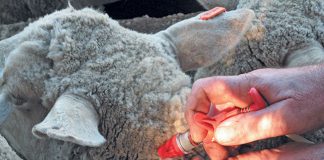
With today’s emphasis on technology – from computer models to feed mixes – the phrase ‘good stockman’ seems to have gone out of the window. This is a great pity, as it carries a special resonance that implies dedication, expertise and a sense of vocation.
While most good stockmen are probably born with a special feel for animals, an enthusiastic farmer can pick up some of this and, through experience, become a good stockman.
Unfortunately, the one skill that a competent stockman cannot easily pass on is the uncanny ability to identify good breeding stock.
Put another way, a beginner who feels overwhelmed by farming jargon must understand that profit is based on aspects that old-fashioned visual herd/ flock inspections can monitor and rectify. There is much truth in the saying that the eye of the master fattens the cattle (or sheep or goats).
Tell-tale signs
Your goal should be to limit situations that could undermine the health of your animals by spotting problems before they get out of hand. Even if you dip, dose and inoculate timely, some unexpected event is sure to come your way. This makes it crucial to keep an eye on things all the time.
Learn to look for tell-tale signs of unwell animals. An experienced stockman need not always bring the animals together for this – a relaxed drive or walk through a land, looking for signs of problems, is often enough.
Even when there is no obvious problem, you should collect and count all the animals on the farm at least once a month. Of course, certain herds or flocks may need special attention, but it sometimes does more harm than good to disturb and crowd animals unnecessarily. Ewes could lose their lambs, or long fleeces could become stained.
The best time to inspect a herd or flock from a distance is early in the morning or late in the afternoon. This is when the animals are usually out grazing, rather than bunched up in the shade.
Stand on the back of your bakkie and do a slow, sweeping gaze over the camp with your binoculars. Is there enough forage? Does the dung look normal? Where are most of the animals? Are most still in the camp? If not, some might have crept out through a damaged fence, or even been stolen.
If too many animals are gathered around a water point and look a bit thin, check the water supply. The reservoir may have run dry. This requires urgent action: you don’t want animals to go without water on a hot day.
Next, try to get an idea of the general appearance of the animals. With sheep, are the ewes grazing peacefully with their lambs? If they are moving with an irregular jerky motion, or scratching or biting into their wool, they could have the beginnings of lice or tick infestation. Attend to this urgently.
Soiled tails or nose discharge (nasal worms) may be signs of internal parasites. If the lambs look a bit scraggy, they could have tapeworm or are not getting enough milk due to increasing drought and poor veld condition.
A swelling under the throat could be a sign of wireworm infection or bluetongue. After rain, some animals could suffer blindness from insect-born eye disease.
Any of these conditions will lead to economic loss in terms of wool production, fertility, growth rate and body condition.
Look for signs of distress such as a lame leg, blowfly strike or lying down while the others graze.
Before moving on to the next camp, locate the rams/bulls and study them.
If everything seems in order, there’s usually nothing to worry about. If you are unhappy with anything, muster all the animals in the camp as soon as possible to scrutinise individuals more closely and treat any problem to prevent it from spreading.
Good nutrition
In livestock farming, the most important money-making factor is probably body condition. Thus nutrition is even more important than the quality of the animal. You can buy the most beautiful show-type animals, but if you don’t feed them enough and keep them healthy, their good genetics will mean nothing.
On the other hand, even a poorly bred animal will do better if it receives enough feed, cool clean water and shelter and is kept free of ticks, lice and intestinal worms.












